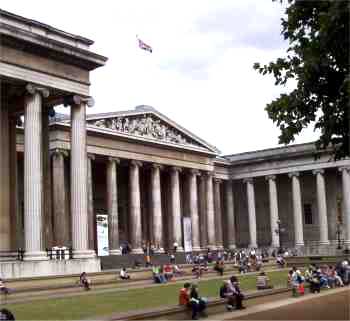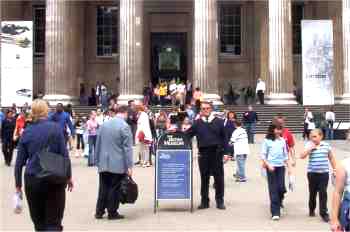British Museums London England The British Museum
This is one of the most visited and best loved museums in Britain. The building originally housed what become the British Library. The space available to them now is put to good use. Many art collections and permanent historic collects are available for public viewing.
The British Museum London England
The British museum in London is among the oldest of the world's great national museums. Many of its collections are among the finest in the world. The museum was founded in 1753 by an act of Parliament after Sir Hans Sloane, a British physician and botanist, willed his collections to the nation.
 |
The British museum London England opened on Jan. 15, 1759, in Montague House in London's West End. The British Museum attracts more than 4 million visitors a year. Other collections were then added to it, such as the Cotton and Harleian ones of manuscripts. 4 years later, the King would donate the 'Old Royal Library' to the newly established museum. Its first collection was manuscripts, books, coins and elements of natural history.
The collections belong to the nation and so admission is free. A reading room exists so that prospective scholars and interested guests could read up on the topics covered in the museum. Following the gift of King George IV's father's library in 1823, new buildings had to be prepared. The architect was Sir R. Smirke. The extra space as represented in the present quadrangular shape of the building was completed in 1857.
The British museum preserves and interprets the history of civilization. It specializes in ancient Mediterranean civilizations and medieval Europe. Its treasures include the sculptures called the Elgin Marbles from the Parthenon in Athens obtained in 1816, and the Rosetta stone from Egypt acquired in 1802. In addition, the museum has important relics from the Aztec empire and from such ancient Mesopotamian cities as Ur and Nineveh.
 |
The museum's catalogues were coupled with the scholarly work inside the museum, but decisions were made to broaden its appeal by printing guides that transformed into detailed illustrated books and by organizing lectures. At the same time, the museum was directly involved in excavations worldwide as it transformed itself into a player on the international archaeological stage. Many of its collections were used to investigate major historical questions such as the decipherment of Egyptian hieroglyphics.
As is common with many museums, there was a problem of lack of space. The museum hurriedly acquired more items, but had trouble displaying them. The natural history pieces were moved to a building in South Kensington becoming a museum in their own right. Buildings such as the King Edward VII's galleries in 1914 and Duveen Gallery in 1939 provided some extra space. The library and department of Ethnography moved out in 1970-3. This became the British Library. The required space was used to complete the Queen Elizabeth II Great Court in 2000. One of the new floors was roofed over to become the largest covered square in Europe.
For more information on the British Museum click here
